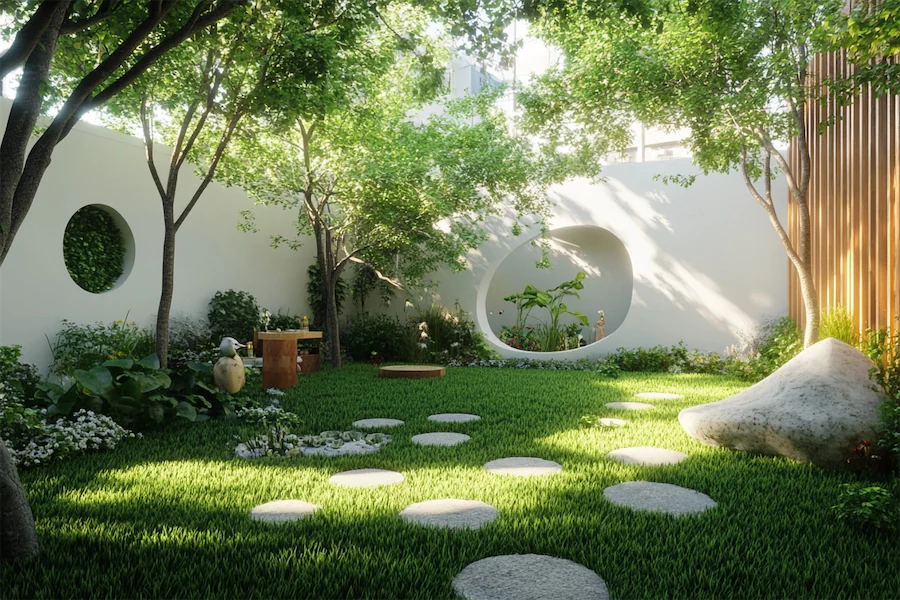A Grassland Garden is a landscape design that emulates the natural beauty of open grasslands or meadows, incorporating a diverse mix of ornamental grasses and native plants. This approach not only creates a visually appealing environment but also supports local biodiversity and requires relatively low maintenance.
History and Origins of Grassland Gardens
The concept of grassland gardens has roots in the traditional prairies and meadows of various regions, where diverse plant species coexist harmoniously. Gardeners and landscape designers have drawn inspiration from these ecosystems to create sustainable and aesthetically pleasing garden spaces that reflect the natural landscape.
Key Features of Grassland Gardens
- Diverse Plant Selection: Incorporating a variety of ornamental grasses and native flowering plants adds texture, movement, and seasonal interest to the garden. For example, combining grasses like blue fescue (Festuca glauca) with perennials such as coneflowers (Echinacea spp.) can create a dynamic and colorful display.
- Naturalistic Design: Arranging plants in informal groupings and drifts mimics the patterns found in wild grasslands, promoting a sense of harmony and tranquility. This design approach allows for a more relaxed and flowing garden layout.
- Low Maintenance: Utilizing drought-tolerant and pest-resistant species reduces the need for irrigation and chemical interventions, making grassland gardens environmentally friendly and easier to care for. Ornamental grasses, in particular, are known for their resilience and minimal maintenance requirements.
Applications of Grassland Gardens
- Residential Landscapes: Homeowners can transform traditional lawns into vibrant grassland gardens, enhancing curb appeal and creating habitat for pollinators. This shift not only beautifies the property but also contributes to local ecological health.
- Public Spaces: Parks and community areas can adopt grassland garden designs to provide educational opportunities and promote environmental stewardship among visitors. These spaces can serve as living examples of sustainable landscaping practices.
- Corporate Campuses: Businesses can implement grassland gardens to create attractive and sustainable surroundings that reflect a commitment to environmental responsibility. Such landscapes can also offer employees and visitors a pleasant and restorative outdoor experience.
Considerations When Designing a Grassland Garden
- Site Assessment: Evaluate soil conditions, sunlight exposure, and climate to select appropriate plant species that will thrive in the specific location. Understanding the site’s characteristics is crucial for the success of the garden.
- Plant Selection: Choose a mix of cool-season and warm-season grasses, along with native perennials, to ensure continuous interest and ecological balance throughout the year. Incorporating a variety of species can also enhance the garden’s resilience to pests and diseases.
- Maintenance Planning: While grassland gardens are low maintenance, periodic tasks such as mowing or cutting back in late winter or early spring are necessary to encourage healthy new growth and maintain the garden’s appearance. Additionally, occasional weeding may be required to prevent invasive species from establishing.
Conclusion
Embracing the grassland garden style allows for the creation of dynamic and sustainable landscapes that celebrate natural beauty and support ecological health. By thoughtfully selecting diverse plant species and adopting a naturalistic design approach, these gardens offer year-round interest and contribute positively to the environment.
